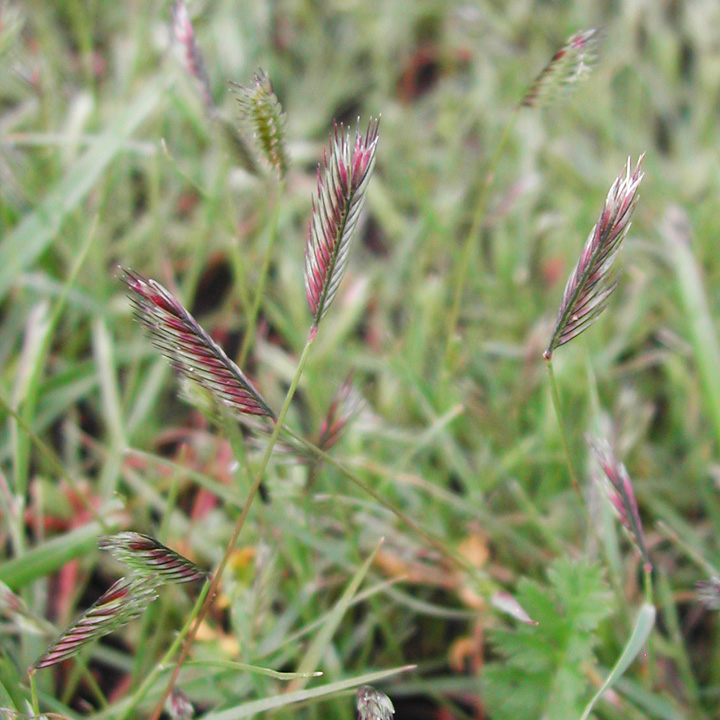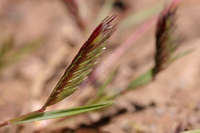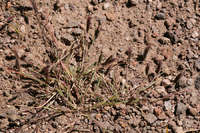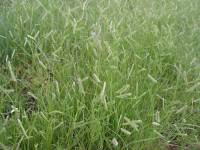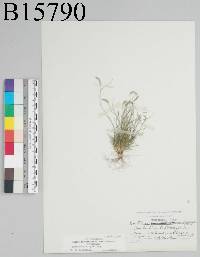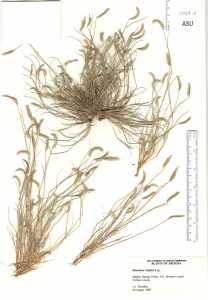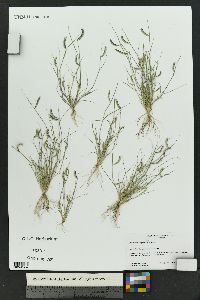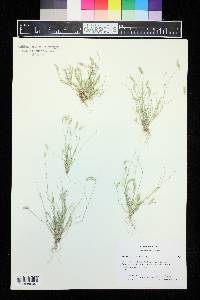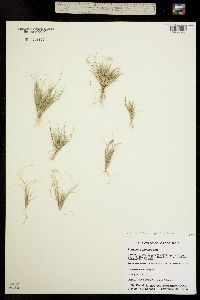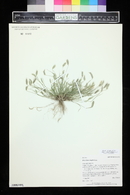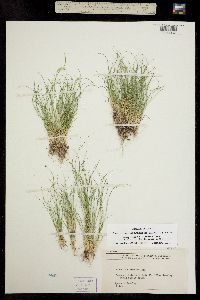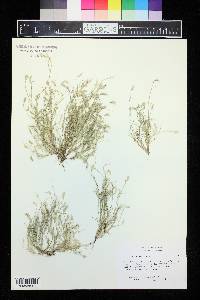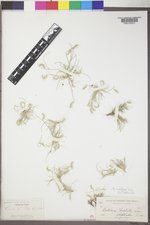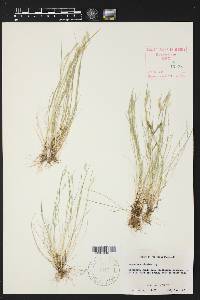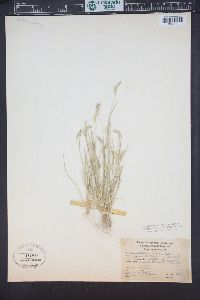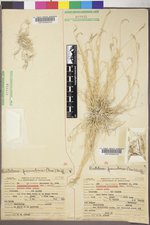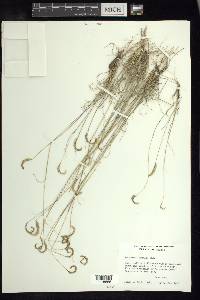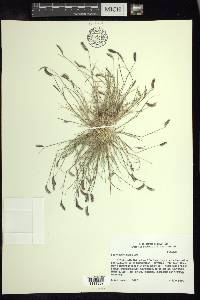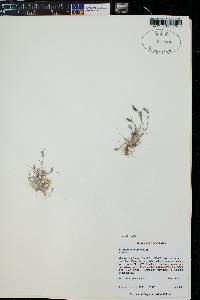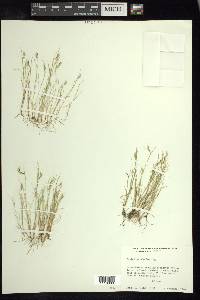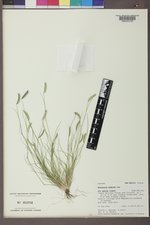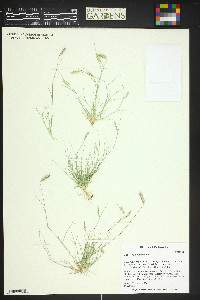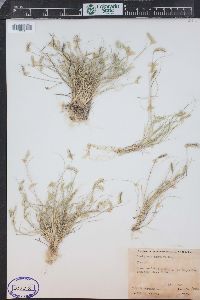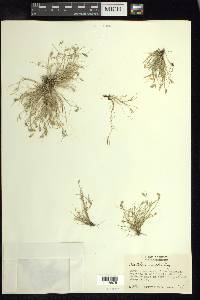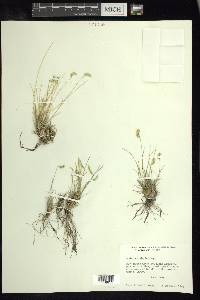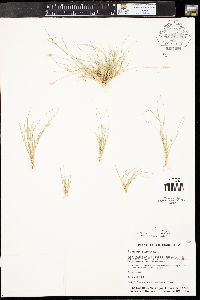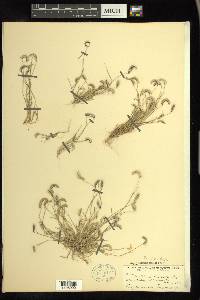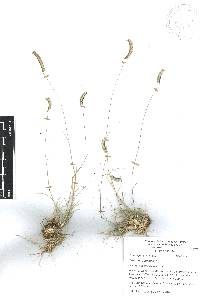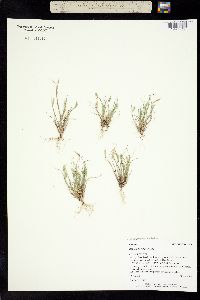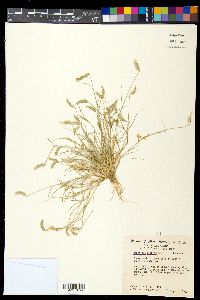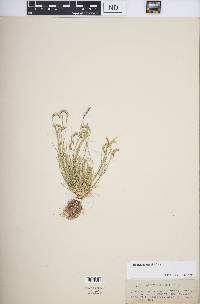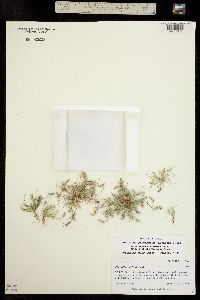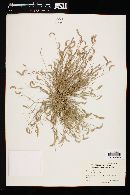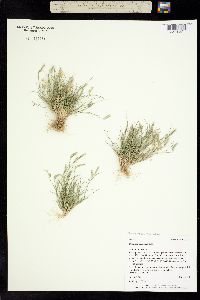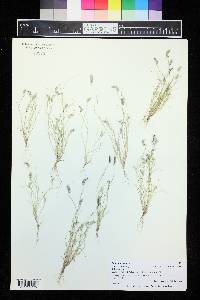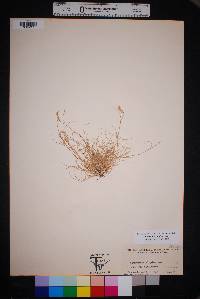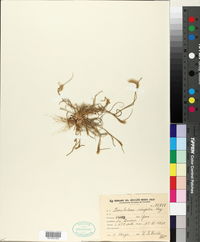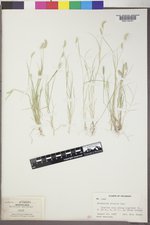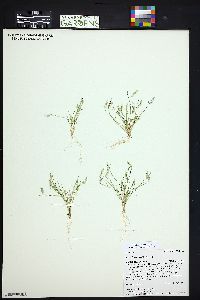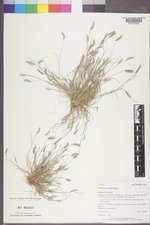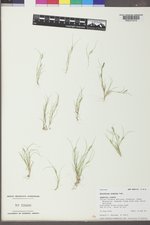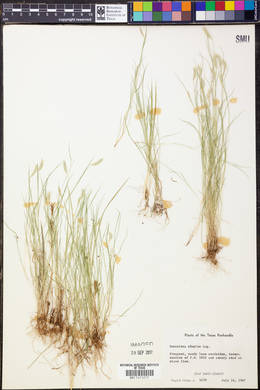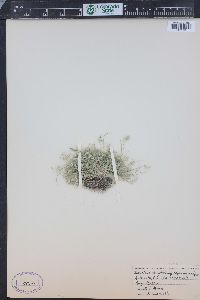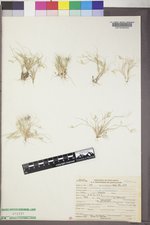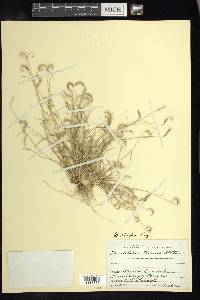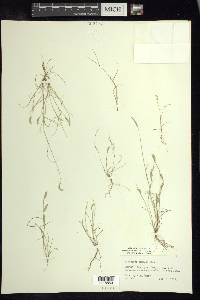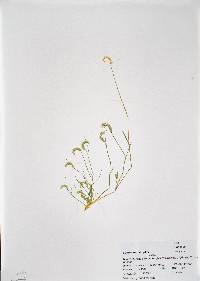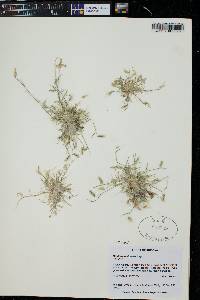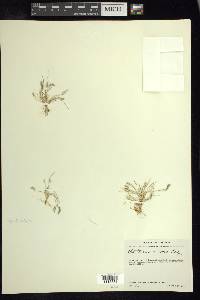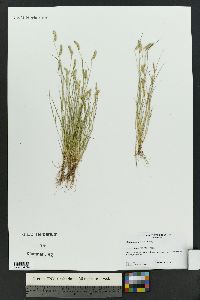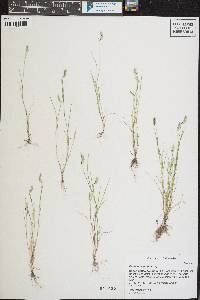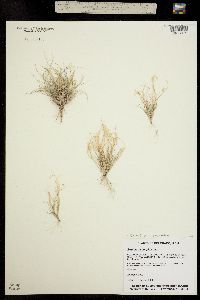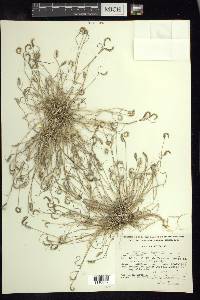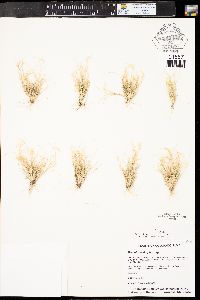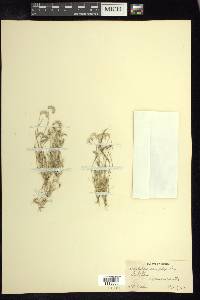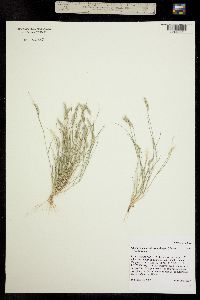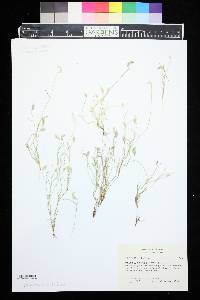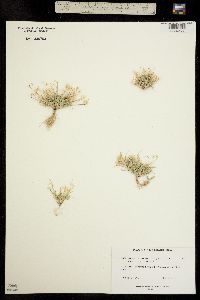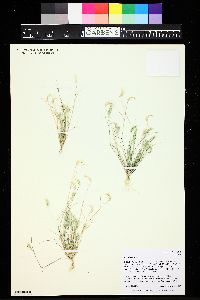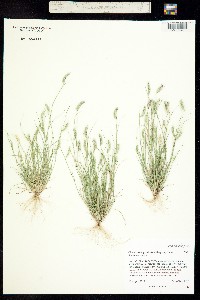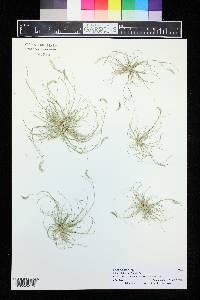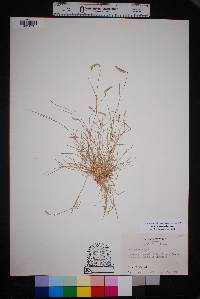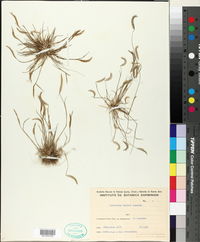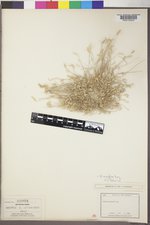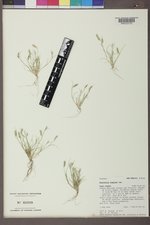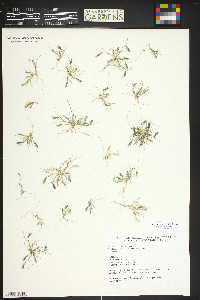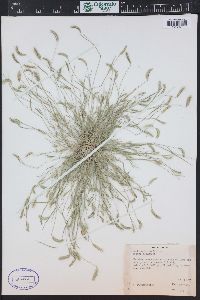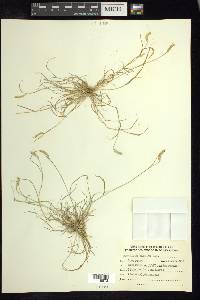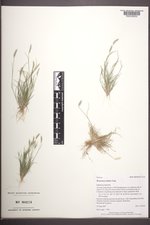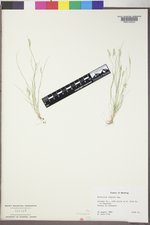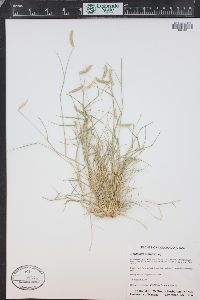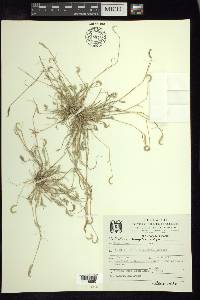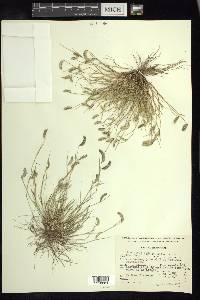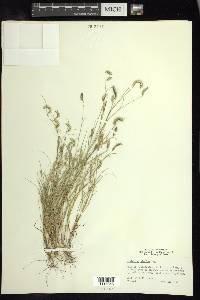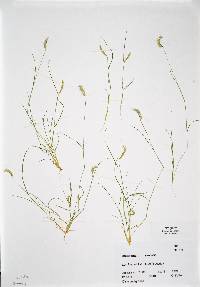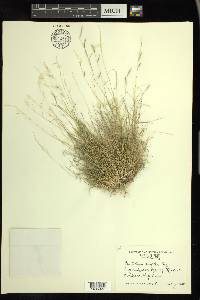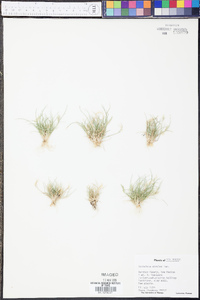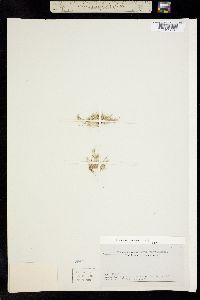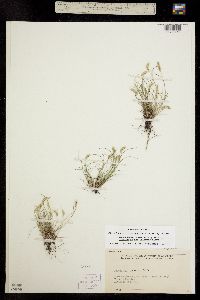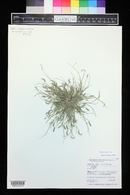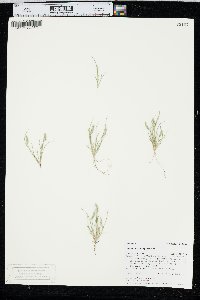
|
|
|
|
Family: Poaceae
Matted Grama, more...mat grama
[Atheropogon humilis (P. Beauv. ex Kunth) Spreng., moreAtheropogon procumbens (P. Durand) J. Jacq., Bouteloua brachyathera Phil., Bouteloua humilis (P. Beauv. ex Kunth) Hieron., Bouteloua pusilla Vasey, Bouteloua rahmeri Phil., Bouteloua simplex var. actinochloides Henrard, Bouteloua simplex var. rahmeri (Phil.) Henrard, Bouteloua tenuis var. humilis (P. Beauv. ex Kunth) Griseb., Chloris filiformis Poir., Chloris procumbens P. Durand, Chloris tenuis Poir., Chondrosum humile P. Beauv., Chondrosum procumbens Desv. ex Beauv., Chondrosum prostratum (Lag.) Sweet, Chondrosum tenue P. Beauv., Cynodon procumbens (P. Durand) Raspail, Erucaria lutescens Cerv.] |
Plants annual. Culms 3-35 cm, usually decumbent, occasionally erect, rarely branching; internodes glabrous. Sheaths smooth, deeply striate; ligules 0.1-0.2 mm, of short hairs, sometimes with a few papillose-based hairs on either side; blades 2-8 cm long, 0.5-1.5 mm wide, flat to involute, adaxial surfaces mostly glabrous, often pilose basally. Panicles usually with only 1 branch (terminating the culm), or with 2-4 branches and subdigitate; branches 10-25(40) mm, persistent, straight, arcuate, or circular, with 30-80 spikelets, axes terminating in a reduced spikelet; disarticulation above the glumes. Spikelets pectinate, with 1 bisexual floret and 1-2 rudimentary florets. Glumes glabrous, sometimes scabrous distally, acute or acuminate; lower glumes 1.5-2.5 mm; upper glumes 3.5-5 mm; lowest lemmas 2.5-3.5 mm, pilose over the veins, 3-awned, awns stout and flattened, central awns 1-2 mm, flanked by 2 membranous lobes, lateral awns shorter than the central awns; lowest paleas obovate, unawned; rachilla internodes subtending second florets with densely pubescent apices; second florets reduced to an awn column with 3 awns of 5-6 mm; third florets, if present, flabellate scales. 2n = 20. Bouteloua simplex grows on rocky, open slopes in grassy and open shrub vegetation at 1200-2500 m. Its native range extends from the southwestern United States through Mexico and Central America to western South America. It is adventive in Maine, where it has been grows in disturbed places, but it is not common there. FNA 2003, Gould 1980, Kearney and Peebles 1969 Common Name: matted grama Duration: Annual Nativity: Native Lifeform: Graminoid General: Annual with decumbent, occasionally erect stems, 3-35 cm, rarely branching. Vegetative: Smooth sheaths, deeply striate, ligule a minute, fringed membrane f short hairs, 0.1-0.2 mm, sometimes with a few papillose-based hairs on either side; blades 2-8 cm long, 0.5-1.5 mm wide, flat to involute, upper surfaces mostly glabrous, often pilose ba Inflorescence: Panicle with only 1 branch terminating the stem, or with 2-4 branches, each 10-25 mm, persistent, straight, arcuate with 30-80 secund and pectinate spikelets, axes terminating in a reduced spikelet; disarticulation above the glumes, glumes glabrous, sometimes scabrous distally, lower 1.5-2.5 mm, upper 3.5-5 mm, lemma silky pubescent on the nerves, body 2.5-3.5 mm long, 3-awned with stout flattened awns, central awn 1-2 mm, flanked by 2 membranous lobes, lateral awns shorter than central awns. Ecology: Found on rocky, open slopes, flats and along washes from 4,000-8,000 ft (1219-2438 m); flower August-September. Notes: Distinctive with its secund inflorescence and its annual habit. Ethnobotany: Used ceremonially, the ashes were applied to sores, a cold infusion was taken for sore throat, and it was used as forage. Etymology: Bouteloua named for brothers Claudio (1774-1842) and Esteban (1776-1813) Boutelou Agraz, Spanish botanists and horticulturalists; simplex means simple, undivided, or unbranched. Synonyms: Chondrosum procumbens, C. prostratum Editor: SBuckley, 2010 |

